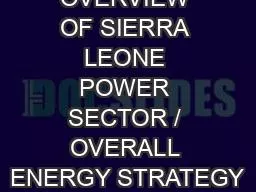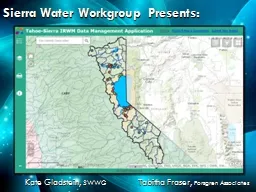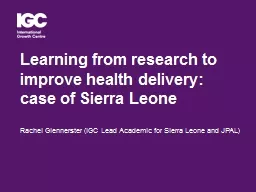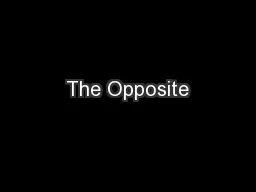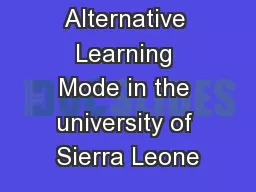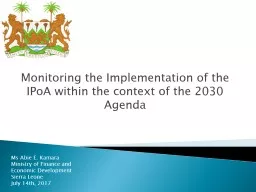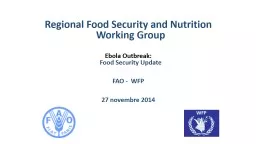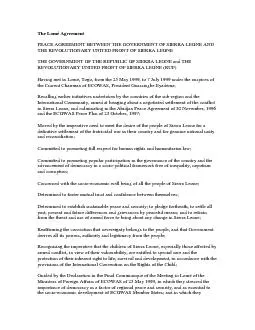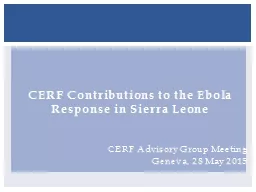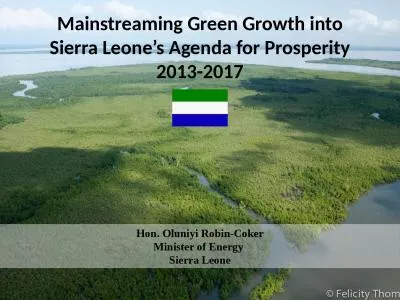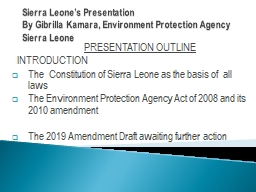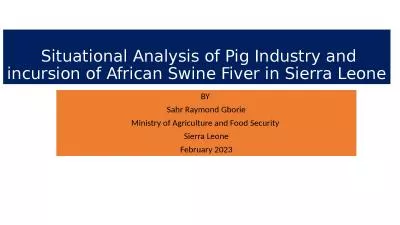PPT-OVERVIEW OF SIERRA LEONE POWER SECTOR / OVERALL ENERGY STRATEGY
Author : shoulderheinz | Published Date : 2020-10-22
22 nd March 2017 Ministry of Energy Republic of Sierra Leone Ing Benjamin Kamara Director of Energy Ministry of Energy benshinohgmailcom 00232 76 369 538 MY
Presentation Embed Code
Download Presentation
Download Presentation The PPT/PDF document "OVERVIEW OF SIERRA LEONE POWER SECTOR / ..." is the property of its rightful owner. Permission is granted to download and print the materials on this website for personal, non-commercial use only, and to display it on your personal computer provided you do not modify the materials and that you retain all copyright notices contained in the materials. By downloading content from our website, you accept the terms of this agreement.
OVERVIEW OF SIERRA LEONE POWER SECTOR / OVERALL ENERGY STRATEGY: Transcript
Download Rules Of Document
"OVERVIEW OF SIERRA LEONE POWER SECTOR / OVERALL ENERGY STRATEGY"The content belongs to its owner. You may download and print it for personal use, without modification, and keep all copyright notices. By downloading, you agree to these terms.
Related Documents

